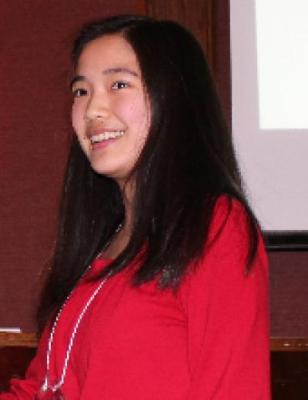Janelle Tam, a student from the Waterloo Collegiate Institute, has won the first prize in the 2012 Sanofi BioGENEius Challenge Canada for her discovery of a disease-fighting, anti-oxidant compound utilizing nano-crystalline cellulose (NCC).
 Janelle Tam, 16, of Waterloo Ontario, created a super-charged anti-oxidant compound using nano-particles from trees, winning top national honors today in the 2012 Sanofi BioGENEius Challenge Canada. (Credit: Sanofi BioGENEius Challenge Canada)
Janelle Tam, 16, of Waterloo Ontario, created a super-charged anti-oxidant compound using nano-particles from trees, winning top national honors today in the 2012 Sanofi BioGENEius Challenge Canada. (Credit: Sanofi BioGENEius Challenge Canada)
This novel super-charged compound paves the way to develop enhanced anti-aging and healthcare products by neutralizing most of the lethal free-radicals that cause damage to body cells. In her research, Janelle demonstrated the powerful antioxidant behavior of NCC for the first time. According to Tam, NCC is stable, water-soluble, harmless, and renewable as it derives from trees.
NCC is a lightweight material with high flexibility and durability and is stronger than steel. It holds potential in innumerable applications. Janelle informed that NCC is a hot research field in Canada.
To create the anti-oxidant compound, Janelle chemically paired a buckminster fullerene, a nanomaterial, with NCC. Janelle stated that these buckyballs have already been utilized in anti-aging and cosmetic products. This unique combination of NCC and buckyballs behaved like a 'nano-vacuum’ to extract and neutralize free radicals.
Janelle is excited about the results of the study. Cellulose has already been utilized as a stabilizer and filler in numerous vitamin products. With the help of NCC, She believes that these products may be used as super-charged free radical neutralizers in the future.
The first large-scale NCC manufacturing facility in the world was opened at a pulp and paper mill located in Windsor, Quebec, in January 2012. NCC is derived from cellulose utilizing a chemical process like the one utilized in pulp mills.